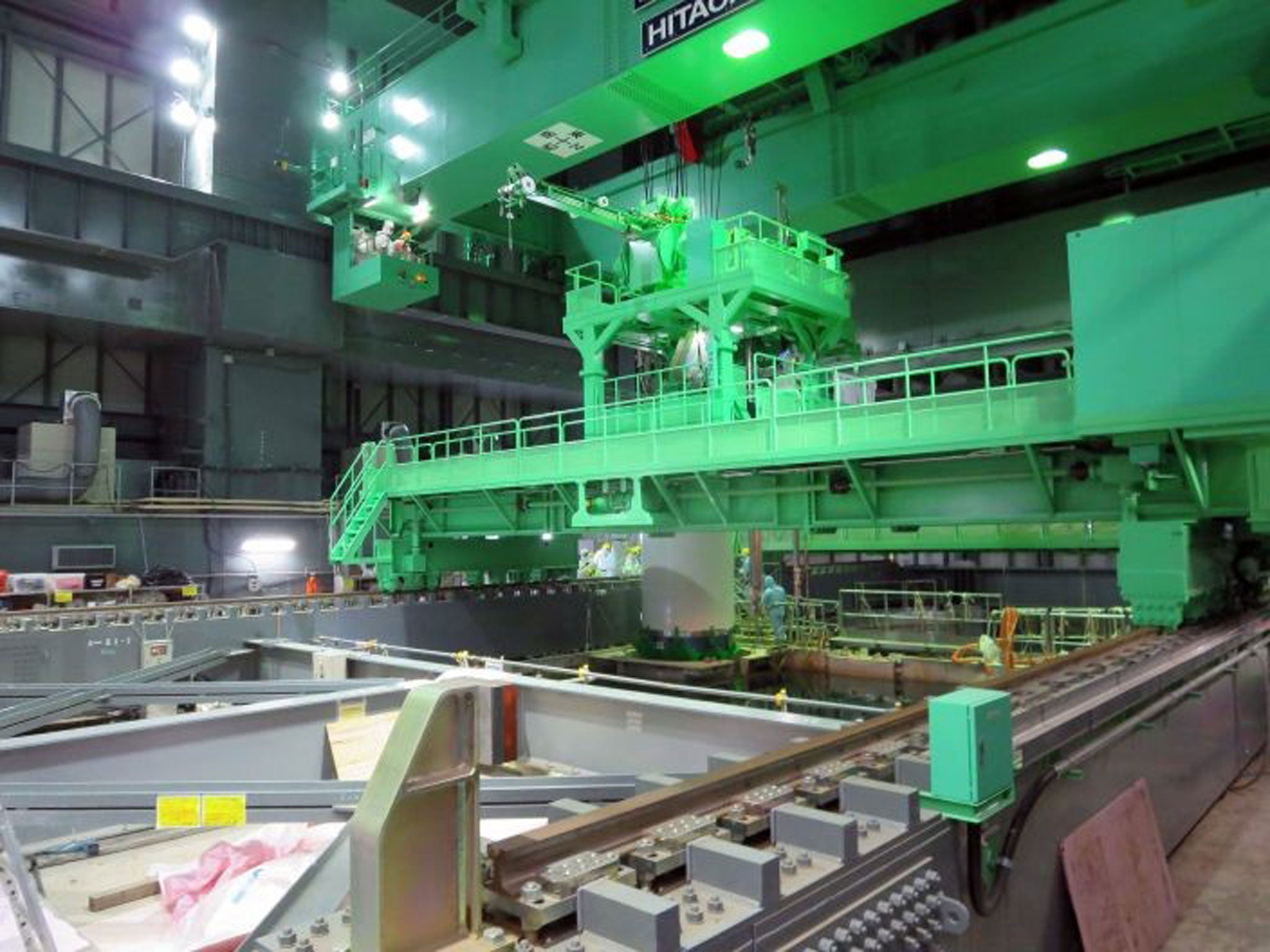Fukushima nuclear plant: Delicate operation underway to remove uranium fuel rods from ‘unstable’ storage facility
Unprecedented and delicate task faces many hazards as workers try to secure large quantities of nuclear material

Workers have begun the delicate operation to remove the first radioactive uranium fuel rods from a reactor at the tsunami-damaged Fukushima nuclear power plant.
In a landmark moment for the full decommissioning process likely to take decades, a custom-built crane started lifting batches of fuel rods from a storage pool described as being in an “unstable condition”.
The rods are bundled together in assemblies, of which there are 1,533. Each one needs to be lifted out of the pool individually in a water-tight cask, before it is placed on a trailer and moved to a safer storage facility.
Experts warned that any mistakes by workers during the process – or worse still another large earthquake – could be disastrous. If the uranium rods are exposed to the air at any point during removal it could result in dangerous overheating and contamination levels.
The Tokyo Electric Power Company (Tepco), said the painstaking task got underway successfully at Fukushima’s Unit 4 reactor this morning.
Unit 4 was offline at the time of the March 2011 disaster, when an earthquake and subsequent tsunami knocked out the cooling systems for the other three reactors, causing them to suffer partial melt downs. It was nonetheless crippled by later hydrogen explosions, which blew off the building’s roof and walls.
Tepco has since reinforced the building, but experts say keeping so many fuel rods in a storage pool in the building still poses a major safety risk.
The company has built a massive steel structure next to and partly over Unit 4 to mount cranes for the operation. It will take at least until the end of 2014 to finish moving the 1,533 sets of fuel rods, including 202 unused sets, to a safer location. Each set includes about 60-80 rods.
Tepco has decided to remove the unused fuel first, before moving on to the more radioactive spent fuel. There are also three sets of fuel rods at the very end of the pool which reportedly suffered slight damage during the disaster.
Experts said the fuel rod sets may have been damaged or jammed by small pieces of debris that fell into the pool during the explosions. Some also raised concern about a major earthquake hitting during the removal work.
Hiroaki Koide, assistant professor at Kyoto University's Research Reactor Institute, told the AFP news agency the timing of the fuel rod removal was crucial as “the reactor's storage pool is in an unstable condition”.
Koide added that the whole decommissioning process would involve tasks that pose “unprecedented challenges”.
Yoshihide Suga, Japan's top government spokesman, told the BBC he hoped the operation would be done properly.
“We hope that this [process] will be conducted in a manner that will not disturb local residents, and that the removal will be done on schedule, properly and safely,” he said.
Video: Japanese tsunami sculpture created
Subscribe to Independent Premium to bookmark this article
Want to bookmark your favourite articles and stories to read or reference later? Start your Independent Premium subscription today.

Join our commenting forum
Join thought-provoking conversations, follow other Independent readers and see their replies